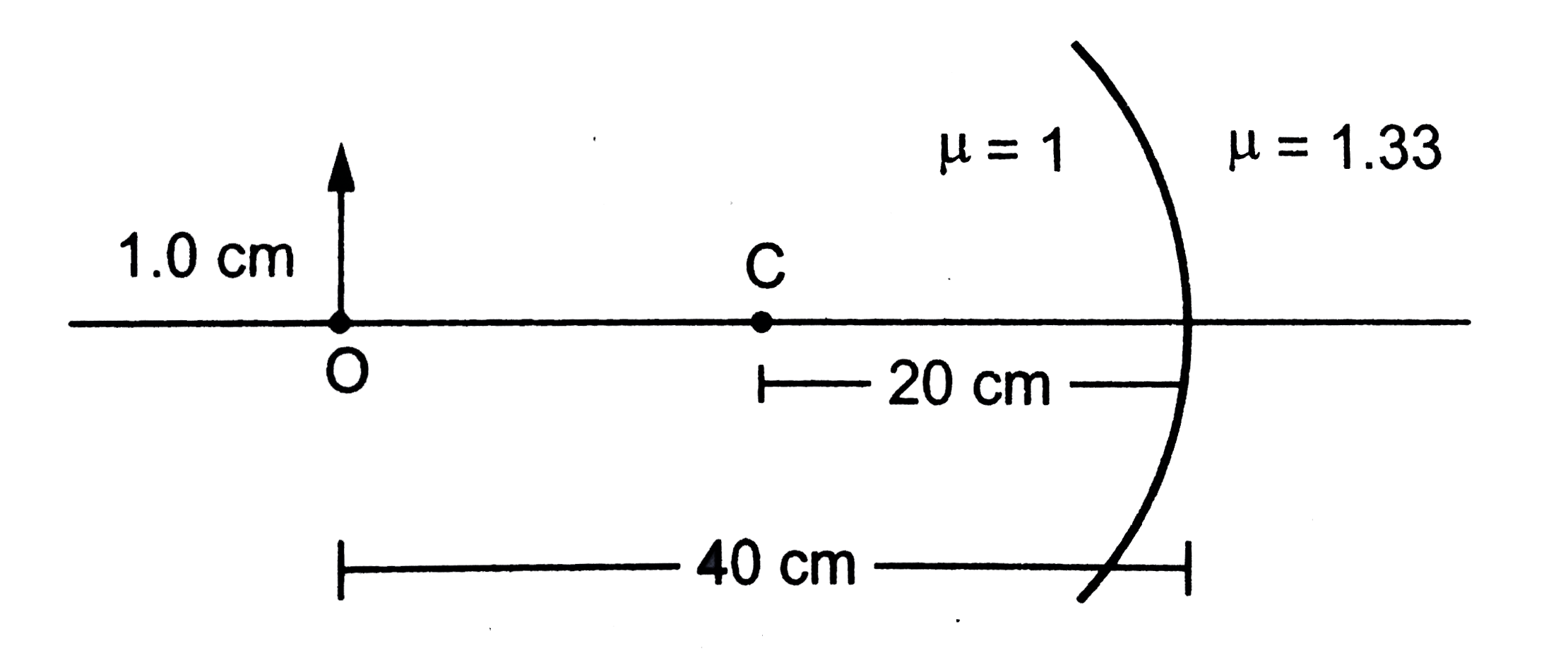Find the size of the image formed in the situation shown in figure.

Here u=-40cm, R=-20cm, μ1=1,μ2=1.33.Wehave
μ2v−μ1u=μ2−μ1R
or,1.33v−1−40cm=1.33−20cm
or, 1.33v=−140cm−0.3.20cm
orv=−32cm
The magnification is
m=h2h1=μ1vμ2u
orh21.0cm=−32cm1.33x(−40cm)
or h2=+0.6cm
The image is erect.
Topper's Solved these Questions
- GEOMETRICAL OPTICSBook:HC VERMA ENGLISHChapter:GEOMETRICAL OPTICSExercise:Question For short Answer
Explore 18 Videos
- GEOMETRICAL OPTICSBook:HC VERMA ENGLISHChapter:GEOMETRICAL OPTICSExercise:Exercises
Explore 78 Videos
- GAUSS LAWBook:HC VERMA ENGLISHChapter:GAUSS LAWExercise:Short Question
Explore 7 Videos
- LIGHT WAVESBook:HC VERMA ENGLISHChapter:LIGHT WAVESExercise:Question for short Answer
Explore 11 Videos
Similar Questions
Locate the image formed by refraction in the situation shown in figure. The point C is the centre of curvature

View SolutionLocate the image of the point object O in the situation shown in figure. The point C denotes the centre of curvature of the separating surface.

View SolutionLocate the image formed by refraction in the situation shown in figure

View SolutionAn object of height 1mm is placed inside a sphere of refractive index μ=2 and radius of curvature 20 cm as shown in the figure. Find the position, size, and nature of image, for the situation shown in Figure. Draw ray diagram.

View SolutionFind the positon of final images formed.
(The gap shown in figure of negligible width)

View SolutionFind the maximum value of M//m in the situation shown in figure so that the system remains at rest. Friction coefficient at both the contacts μ. Discuss the situation when tanθ>μ

View SolutionA particle is moving in a circle in front of a plane mirror in the situation as shown in figure. The plane of motion of the particle is perpendicular to the plane of mirror. Then the motion of image of particle with respected to the partickle is

View Solutionfind the acceleration of the block of mass M in the situation shown in figure. All the surfaces are frictionless and the pulleys and the string are light.

View SolutionFind the acceleration of the block of mass M in the situation shown in figure. All the surfaces are frictionless.

View SolutionFind the acceleration of the block of mass M in the situation shown in figure. All the surfaces are frictionless.

View Solution